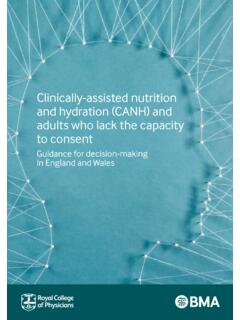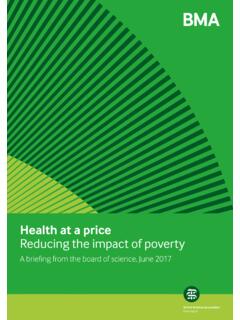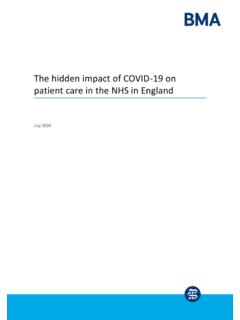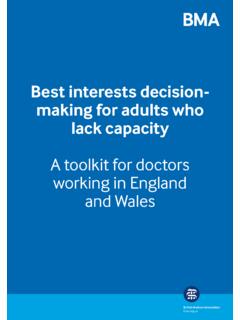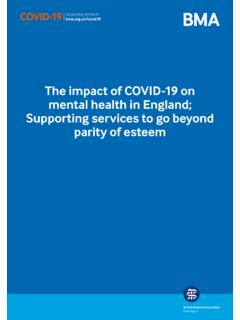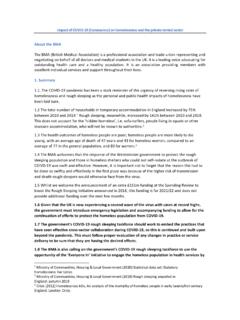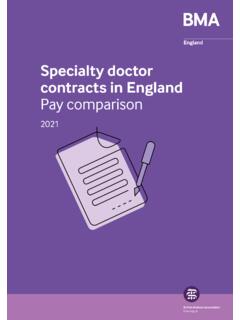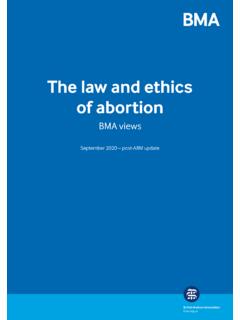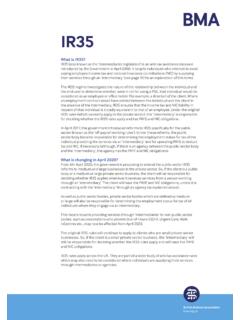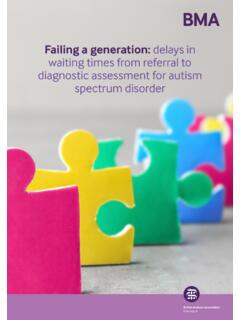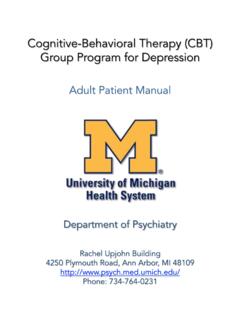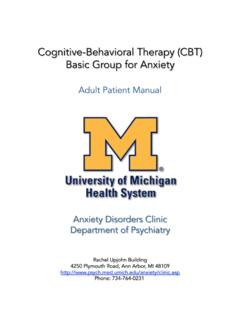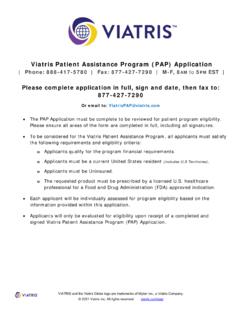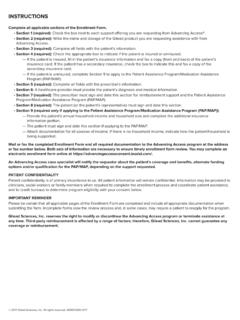Transcription of Patient Group Directions and Patient Specific Directions ...
1 Patient Group Directions and Patient Specific Directions in General Practice BMA Policy directorate January 2016 Page 2 of 19 There have been a number of regulatory and organisational changes within the NHS since the General Practitioners Committee (GPC) last produced guidelines on Patient Group Directions (PGDs) and Patient Specific Directions (PSDs) in 2010. In addition, NICE Medicines Practice Guideline 2 (MPG2)1 was published in 2013 and as a consequence aspect of the original GPC advice have been updated, although many of the general principles and legislative requirements of PGDs remain the same. Note that this guidance is for England only, although there are links to guidance in Scotland and Wales at the end of the document. The Human Medicines Regulations 2012 do not permit nurses, or other registered health care professionals (HCPs), who are not qualified prescribers to administer or supply prescription only medicines (POMs) unless one of three types of instruction is in place: 1.
2 A signed prescription 2. a Patient Specific Direction (PSD) 3. a Patient Group Direction (PGD). There are some Specific exemptions from medicines legislation which may apply in limited circumstances administration of certain parenteral medicines such as adrenaline that can be administered in an emergency without the Directions of a prescriber2. If non-prescribing health care professionals administer a medicine on the instruction of a GP, the GP must be able to show that the HCP has authority for that administration via one of the above methods. To summarise: PGDs should be used only where appropriate, suitable and legal. To check use the flow chart to PGD or not to PGD 3 PGDs can be written by anyone involved with their use but the Group should include a doctor/ dentist and a pharmacist who will sign it off PGDs can only be approved by certain bodies, in the cases relevant to general practice these are Clinical Commissioning Groups (CCGs), Local Authorities or NHS England 1 2 3 Page 3 of 19 PGDs can only be used by certain registered health professionals listed in legislation4 this excludes Health Care Assistants there are certain categories of medicines for which a PGD should only be used with caution for example antibiotics, off license drugs, controlled drugs, or those subject to black triangles.
3 Patient Specific Directions (PSDs) In general, most of the occasions where a non-prescribing health care professional supplies or administers a POM they do so under the terms of a PSD. A Patient Specific Direction is an instruction from a doctor, dentist, or non-medical prescriber for medicines to be supplied and/or administered to a named Patient after the prescriber has assessed the Patient on an individual basis. There is no set protocol for PSDs written into the Legislation. As long as the prescriber (doctor or other registered health professional who is a qualified independent or supplementary prescriber) has considered the individual Patient and has, as a consequence, given an instruction to supply or administer a drug to that Patient the PSD is sound. There is no requirement for there to be a contractual relationship between the prescriber and the person carrying out the administration. A PSD may be verbal or written but must be made after considering that individual Patient and must constitute a clear instruction to the practice nurse or other competently trained health care professional to supply or administer the drug.
4 PSDs can be an electronic instruction, provided that it can be linked uniquely to the Patient and the prescriber and is under his/her sole control. The PSD could also be a signed list of patients , such as in a flu or travel clinic. There is no requirement for the instruction to be defined as a PSD in the notes. Some of the documents linked to in this guidance state that PSDs need to be in a written form, but this is not a requirement of the regulations. Health professionals need to be mindful of the requirements to maintain accurate Patient records and the need to ensure that communications between them are understood. Where a verbal PSD is used it would be good practice to record the form of the direction alongside the accurate clinical record of the action(s) subsequently carried out. 4 Page 4 of 19 The NHS Patient Group Directions website contains set of FAQs about PSDs5. Patient Group Directions (PGDs) A Patient Group Direction is a written instruction for the supply and/or administration of medicines by named health care professionals to groups of patients who meet the criteria specified in the PGD.
5 PGDs, can be used in limited situations in which this offers an advantage for Patient care, without compromising Patient safety, and where there are clear governance arrangements and accountability 6. PGDs were introduced as a facilitative measure to allow some registered health care professionals to take a decision to supply or administer a POM to a Patient with an identified clinical condition without the Patient needing to see a prescriber. This can be useful in services where assessment and treatment follows a clearly predictable pattern ( immunisation, family planning) or where a practice nurse has the experience and knowledge to make decisions on appropriate treatment ( travel clinics). Because they are, in effect, giving someone without the legal ability to prescribe the right to supply or administer prescription only medication, they are instruments that should be subject to monitoring and checks. Nurses using PGDs must have been assessed as fully trained and competent to use them and must comply with the standards set by their professional regulatory body, the Nursing and Midwifery Council s Standards for Medicine Management.
6 For further information about using PGDs, see section NICE MPG2 PGDs. Particulars to be included in a Patient Group Direction a) The period during which the Direction shall have effect. b) The description or class of prescription only medicine (POM) to which the Direction relates. c) Whether there are any restrictions on the quantity of medicine which may be supplied on any one occasion, and, if so, what restrictions. d) The clinical situations which POMs of that description or class may be used to treat. e) The clinical criteria under which a person shall be eligible for treatment. f) Whether any class of person is excluded from treatment under the Direction and, if so, what class of person. 5 6 Para of NICE PGD guidance: Page 5 of 19 g) Whether there are circumstances in which further advice should be sought from a doctor or dentist and, if so, what circumstances. h) The pharmaceutical form or forms in which prescription only medicines of that description or class are to be administered.
7 I) The strength, or maximum strength, at which prescription only medicines of that description or class are to be administered. j) The applicable dosage or maximum dosage. k) The route of administration. l) The frequency of administration. m) Any minimum or maximum period of administration applicable to prescription only medicines of that description or class. n) Whether there are any relevant warnings to note, and, if so, what warnings. o) Whether there is any follow up action to be taken in any circumstances, and, if so, what action and in what circumstances. p) Arrangements for referral for medical advice. q) Details of the records to be kept of the supply, or the administration, of medicines under the Direction. Information on what should be included in a PGD is also set out in section NICE MPG2 PGDs. Questions and Answers 1. Can nurses who are not qualified prescribers administer or supply a prescription only medicine? Yes. A GP can instruct a named practice nurse to supply or administer medicines on his or her behalf.
8 However, medicines may only be administered by a practice nurse if one of three types of instruction is in place: a signed prescription a Patient Specific Direction (PSD) a Patient Group Direction (PGD). The Human Medicines Regulations 2012 do not permit nurses who are not prescribers to administer or supply POMs without a PSD or PGD or certain medicines exemptions in place or the item having been previously prescribed by a practitioner. 2. Can a nurse independent prescriber administer a POM without a PSD or PGD in place? Yes. Nurse independent prescribers do not require a PSD or PGD in order to administer a POM. Under the Human Medicines Regulations 2012 a nurse independent prescriber is able Page 6 of 19 to supply or administer any licensed medicine for any medical condition within their competence, including some controlled drugs for specified medical conditions. 3. When can PGDs be used in general practice? In some circumstances, where assessment and treatment follows a clearly predictable pattern (for example where nurses are administering travel or childhood vaccinations to large groups of patients ) practices may find it beneficial to have an agreed PGD in place so a GP does not have to give a Specific instruction for each individual Patient .
9 A PGD enables a nurse to supply and/or administer prescription-only medicines to patients using his/her own assessment of Patient need, in accordance with the criteria set out in the Human Medicines Regulations 2012 Schedule 16, Part I7. The PGD must include this information. A selection of example PGDs including those for vaccinations are available on the NHS PGD website8. 4. What role do LMCs have in the development of PGDs? Ensure that practice efficiency and workload is not affected by the failure of statutory organisations ( CCGs) to approve appropriate PGDs Provide advice to practices on PGDs and PSDs. Provide advice to practices seeking to write their own PGDs Ensure that CCGs do not unreasonably withdraw PGDs or allow them to go out of date without renewal 5. Can non-prescribing nurses administer POMs without a PGD in place? Yes, a PGD is just one of three methods of permitting administration. The other two, prescriptions or PSDs, are still available.
10 Some employers of Community Nurses ask GPs to fill in administration charts before allowing a nurse to give a drug, although this must be viewed as discretionary as it is not a legal requirement if a prescription providing detailed instructions has been provided. 6. Do PGDs apply to Health Care Assistants (HCAs)? No. HCAs are not registered healthcare professionals and can only administer prescription only medicines where they have either been prescribed or there is a Patient Specific Direction in place. The Human Medicines Regulations 2012 does not allow HCAs to administer POMs under a PGD. 7 8 Page 7 of 19 7. Can PGDs be used for all medicines? No, PGDs must only include medicines with a UK marketing authorisation. There are limitations but they are unlikely to apply in general practice as you cannot use them for unlicensed drugs such as specials, dressings, abortifacients, or controlled drugs where used to treat addiction. In addition PGDs should be considered carefully for antimicrobials, off licence, black triangle and controlled drugs.
